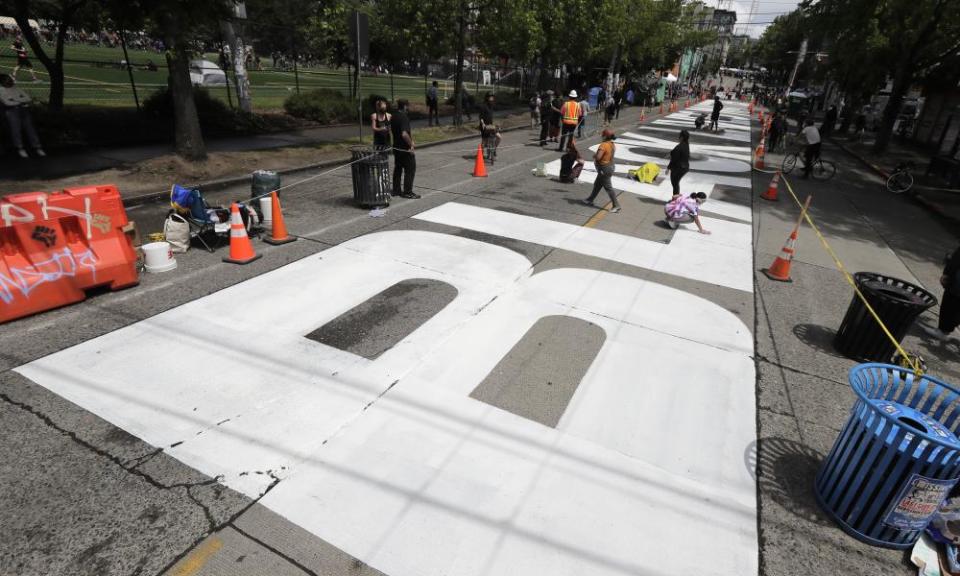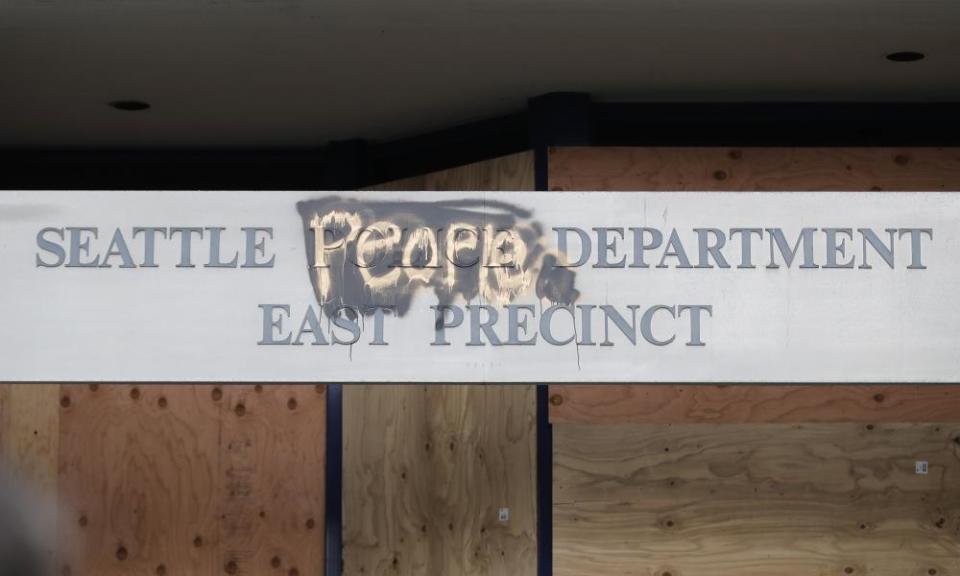Seattle protesters take over city blocks to create police-free 'autonomous zone'
Hundreds of protesters have taken over several blocks of Seattle and transformed it into the Capitol Hill Autonomous Zone, or “Chaz”, helping to amplify nationwide protests while offering a real-world example of what a community can look like without police.
For three days, protesters have filled several blocks and at least part of a park in the artsy Capitol Hill neighborhood of Seattle, after police abandoned their east precinct, following dangerous clashes between protesters and law enforcement.

“I think what we’re seeing in Chaz is just a snippet of a reality that the people can have,” said Dae Shik Kim Jr, 28, one of the many organizers at the site. “I think what it’s doing is exposing the unnecessary need of an over-policed state.”
The space has both a protest and street fair vibe, with a small garden, medic station, smoking area, and a “No Cop Co-op”, where people can get supplies and food at no cost. There’s also a trio of shrine-like areas filled with candles, flowers and images of George Floyd and many others who have been killed by police.
But in a tweet, Donald Trump described the protesters as “Domestic Terrorists” who “have taken over Seattle, run by Radical Left Democrats, of course. LAW & ORDER!”
In another tweet addressing the Seattle mayor, Jenny Durkan, and the Washington governor, Jay Inslee, he told them to “take back your city NOW… If you don’t do it, I will. This is not a game,” adding: “These ugly Anarchists must be stopped IMMEDIATELY. MOVE FAST!”

Inslee responded with his own tweet: “A man who is totally incapable of governing should stay out of Washington state’s business.”
Durkan pushed back against Trump’s tweets during a press conference on Thursday, saying the story he is trying to tell about domestic terrorists and a radical agenda was “simply not true”.
“The threat to invade Seattle, to divide and incite violence in our city, is not only unwelcome, it would be illegal,” she said.
Kim said he saw a silver lining to the president’s tweets, as they could force Seattle leaders to decide whether they are going to side with Trump or with the community.
Related: Trump complains about 'ugly anarchists' as police continue aggression on US protesters
“In a lot of ways they have been trying to pacify the movement, and undercut the efforts of the organizers, but they’ve been unsuccessfully doing that,” he said.
For days the area has been filled with all manner of speeches, concerts and movie nights, including 13th, the Ava DuVernay documentary about racial inequality and the criminal justice system.

Throughout the space are images and signs claiming this space for the people. “You are now entering free Cap Hill,” reads one sign at the edge of the zone in Capitol Hill, which has long had a leading role in the city’s political and social movements. Across the main road in the encampment are three words written in large white block letters: “Black Lives Matter.”
Protesters have described the site as a safe and peaceful place, where the vast majority of people wear masks to protect each other against coronavirus and offer whatever skills or supplies they have. On Wednesday, people could be seen handing out masks, hand sanitizers, snacks and water.
A variety of demands have been raised during the course of the occupation, but the main three involve defunding the police, using that money to invest in community health and services, and dropping criminal charges against protesters.

Shaun Scott, a Seattle writer and activist, said he saw some parallels between what was happening in Seattle and the Occupy movement, calling them “kindred spirits in a lot of ways”.
“But the movement for police abolition in Seattle right now has differentiated itself by presenting three very clear and actionable demands that the city can take action on in a pretty short period of time,” he said.
Lisa McCallister, 30, a case worker in Seattle who has attended the protests, described Chaz as “amazing”.
“It’s the retaking of a space that was covered in violence for no reason,” she said. “They were teargassing and flash-banging at 12.30 at night for hours. And then to kind of completely retake this space with peace and love.”

